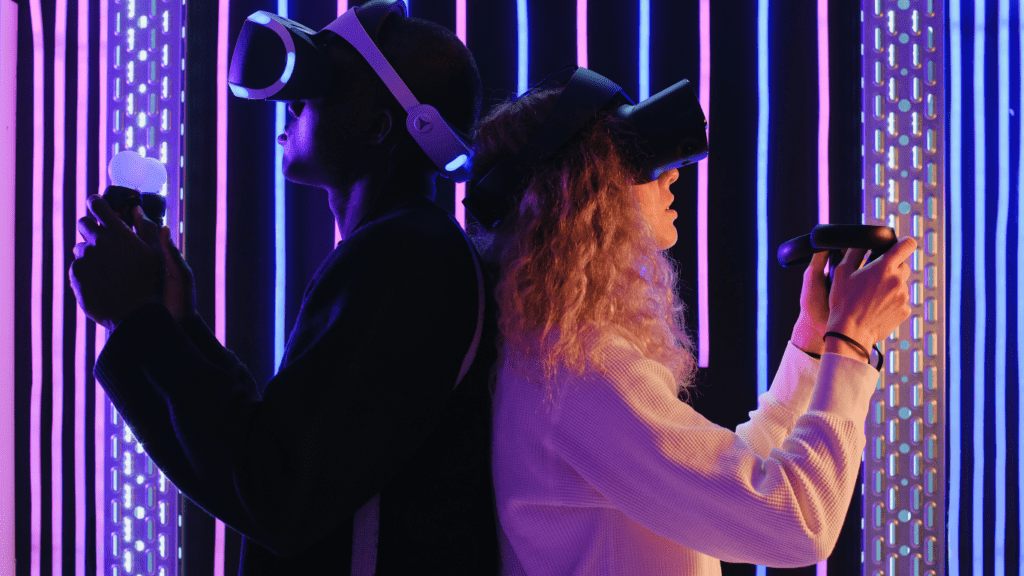As someone who has delved into the realm of mental health treatments, I’ve come across a groundbreaking approach that is changing the landscape of PTSD therapy: Virtual Reality Exposure Therapy. Imagine being able to confront your fears and traumas in a controlled, virtual environment tailored to your needs. This innovative method harnesses the power of technology to provide a safe space for individuals to navigate through their psychological challenges.
In my exploration of Virtual Reality Exposure Therapy for PTSD, I’ve witnessed firsthand the transformative impact it can have on those struggling with the aftermath of traumatic experiences. By immersing patients in simulated yet realistic scenarios, this therapy allows them to confront and process their triggers in a guided and supportive setting. It’s fascinating to see how this cutting-edge tool is revolutionizing the way we approach PTSD treatment, offering new hope and healing to those in need.
Overview of Virtual Reality Exposure Therapy for PTSD
Virtual Reality Exposure Therapy (VRET) is an advanced treatment method for Post-Traumatic Stress Disorder (PTSD). It simulates real-life scenarios in a safe and controlled virtual environment to help individuals confront and manage their fears and traumatic memories.
In VRET sessions, individuals are exposed to virtual situations that replicate their trauma triggers. This exposure allows them to desensitize themselves to the stimuli gradually. By facing these triggers in a therapeutic setting, individuals can learn coping mechanisms and reduce their emotional distress over time.
Research has shown that VRET can be effective in reducing PTSD symptoms and improving overall psychological well-being. It offers a unique opportunity for individuals to process their traumatic experiences in a secure environment, leading to significant improvements in their quality of life.
VRET enables therapists to tailor exposure scenarios to each individual’s specific trauma, ensuring personalized and effective treatment. This personalized approach helps individuals make progress at their own pace, enhancing the therapy’s efficacy and long-term benefits.
Overall, Virtual Reality Exposure Therapy has emerged as a promising intervention for individuals struggling with PTSD, offering a novel and impactful way to address and alleviate their symptoms.
Benefits of Virtual Reality Exposure Therapy
Virtual Reality Exposure Therapy (VRET) offers several significant advantages in the treatment of PTSD. Let’s explore some of the key benefits below.
Reducing PTSD Symptoms
VRET has been proven to be highly effective in reducing symptoms of PTSD. By providing a controlled environment for individuals to confront their fears and traumas, VRET helps in desensitizing them to triggers gradually. This personalized approach allows individuals to work through their traumatic experiences at their own pace, leading to a decrease in PTSD symptoms over time.
Increasing Treatment Engagement
One of the notable benefits of VRET is its ability to increase treatment engagement among individuals with PTSD. The immersive and interactive nature of virtual reality scenarios makes therapy more engaging and interactive for patients. By offering a sense of empowerment and control over their healing process, VRET motivates individuals to participate actively in their treatment, enhancing the overall effectiveness of therapy.
Effectiveness of Virtual Reality Exposure Therapy
In exploring Virtual Reality Exposure Therapy (VRET) for PTSD, research consistently demonstrates the effectiveness of this innovative approach in treating post-traumatic stress disorder. VRET creates a safe and controlled environment for individuals to confront and process their traumas through simulated real-life scenarios. This immersive experience enables individuals to desensitize to triggers and develop coping mechanisms tailored to their specific needs.
Studies have shown that VRET significantly reduces PTSD symptoms and contributes to enhancing psychological well-being by allowing individuals to engage in personalized exposure scenarios. Moreover, VRET offers long-term benefits by progressively decreasing symptoms and increasing treatment engagement. By providing an immersive and empowering experience, VRET proves to be a highly effective therapy for individuals suffering from PTSD.
Potential Drawbacks to Consider
When considering Virtual Reality Exposure Therapy (VRET) for PTSD treatment, it’s essential to be aware of potential drawbacks that may arise during the therapy process. While VRET has proven to be highly effective in treating PTSD, there are some factors to keep in mind:
- Technological Limitations:
While VRET technology has advanced significantly, there may still be limitations in the realism and detail of virtual environments, which could impact the effectiveness of exposure therapy. - Cost of Implementation:
Setting up and maintaining VRET systems can be costly, which may pose a barrier to access for some individuals or treatment facilities. - Safety Concerns:
Some individuals may experience side effects such as dizziness or nausea when using VR headsets, potentially limiting the feasibility of VRET for certain patients. - Lack of Human Interaction:
VRET relies on virtual environments, which may lack the human element present in traditional therapy settings. The absence of face-to-face interaction with a therapist could be a drawback for some individuals. - Limited Generalization:
The skills learned in virtual environments during VRET may not always generalize to real-world situations, leading to a potential gap in translating therapy gains to everyday life.
Considering these potential drawbacks alongside the benefits of VRET can help individuals make informed decisions about incorporating this therapy into their PTSD treatment plan.


